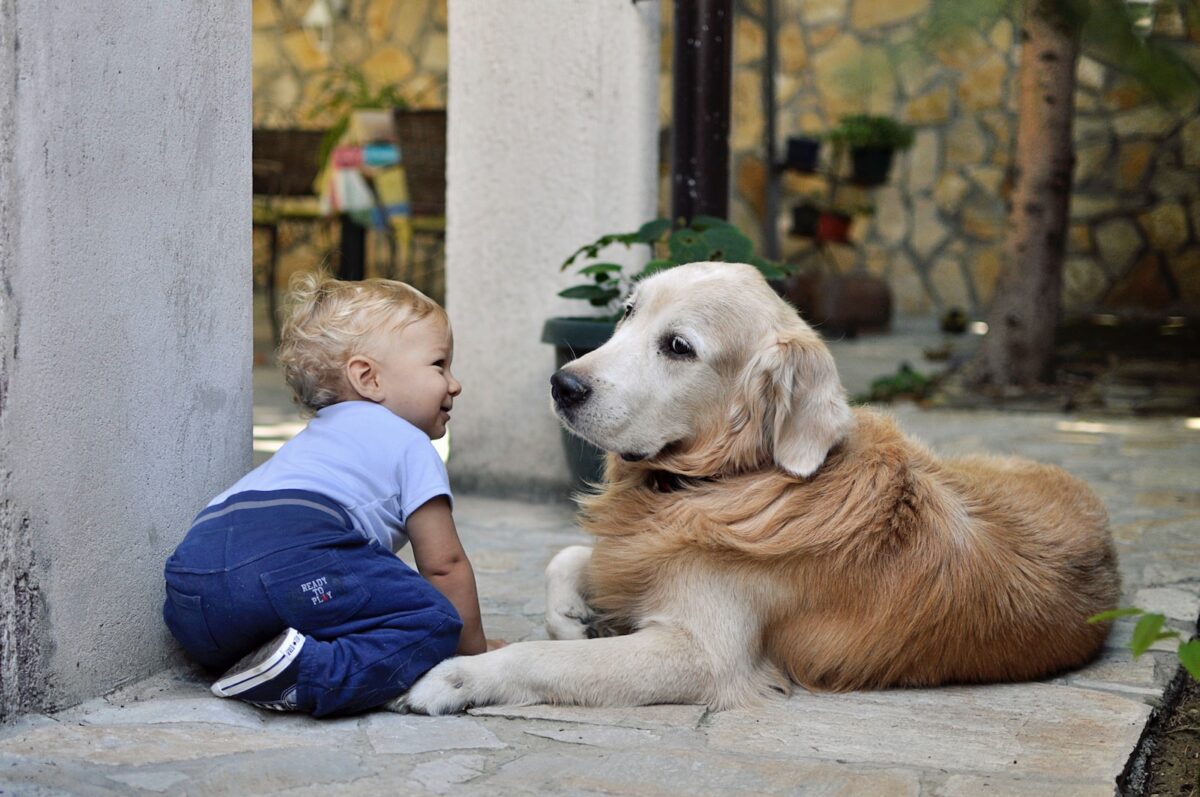Welcoming a new baby into your family is an exciting and joyous event. But if you’re a dog owner, it can also be a time of adjustment for your furry friend. Proper dog training for babies is essential to ensure a harmonious home where your four-legged and two-legged family members coexist happily and safely. In this blog post, we’ll guide you through the steps to prepare your dog for the arrival of a new baby, creating a loving environment for everyone.
By the way, if you’re looking to get a professional involved in the process I recommend Adrienne Farricelli’s “Brain Training For Dogs” program. It’s a great program that we used to train our own dogs Bella and Sheep.
Start Early
The moment you learn about the impending arrival of a baby, it’s time to start preparing your dog. Give your dog time to adjust to the changes in your daily routine, allowing them to adapt to the new dynamics. The ideal time to begin dog training for babies is early in your pregnancy or when you begin preparations for your adopted baby’s arrival. This proactive approach allows your dog to adjust gradually.
Behavior Assessment: Evaluate your dog’s behavior and identify any areas that need improvement. Does your dog jump on guests, have food aggression, or react strongly to loud noises? Address these issues through training.
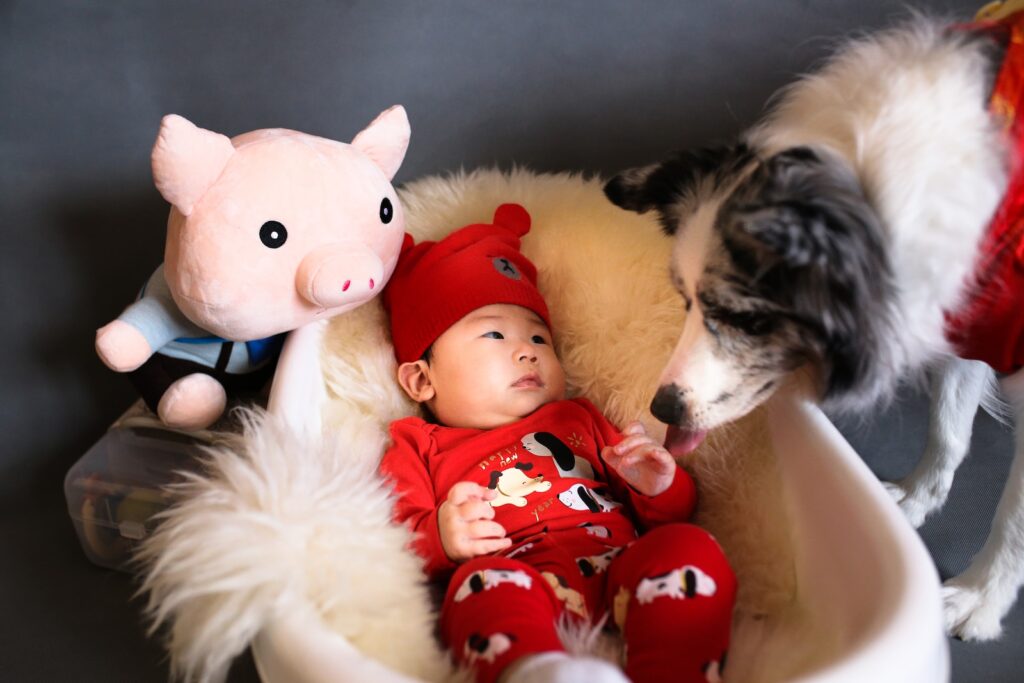
Create a Safe Feeding Zone
If your dog typically grazes throughout the day, consider feeding them discrete meals in a designated area behind closed doors or a baby gate. This step helps prevent stress related to food guarding and sets the stage for a smoother transition.
Introduce Baby Gear Gradually
Start acquiring baby equipment as early as possible to allow your dog to become accustomed to these new items over the course of your pregnancy. Activities such as walking with the baby stroller, handling the infant car seat, and setting up the baby’s room will familiarize your dog with the associated scents and objects.
Socialization with Babies: If you have friends or family with infants, arrange supervised visits to expose your dog to the presence of babies. This can help your dog get accustomed to the sight, sounds, and smells associated with babies. Always prioritize safety and ensure your dog is on a leash during these initial encounters.
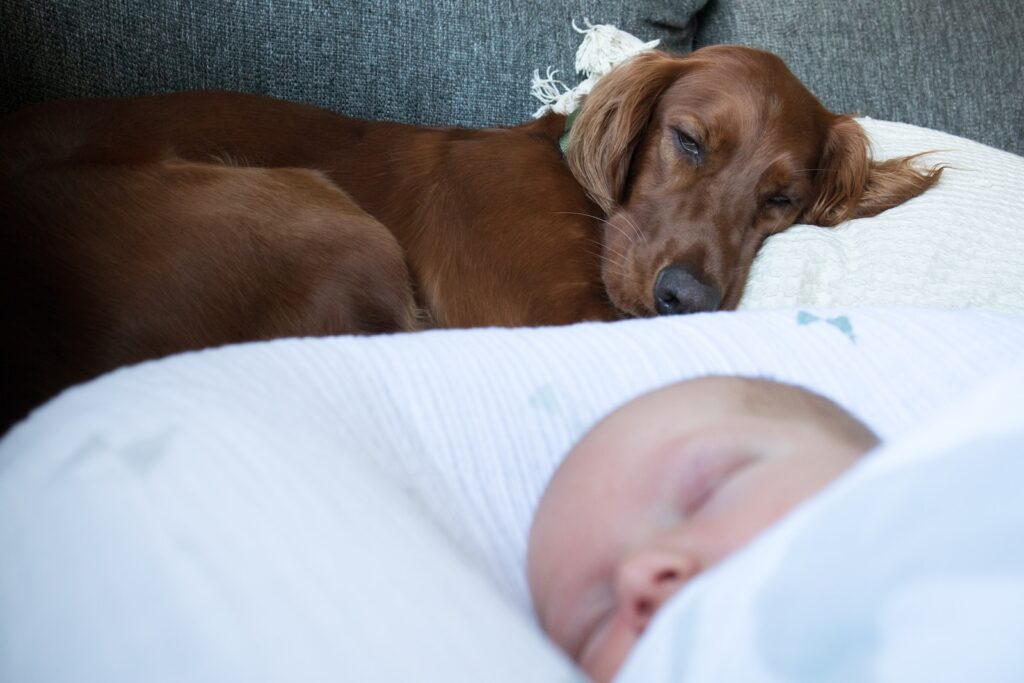
Introduce Baby Smells
Babies come with distinct scents, from baby lotions to diapers. You can introduce these smells to your dog by placing a used diaper or some baby lotion in their vicinity. This will help your dog become familiar with these new scents.
Establish Off-Limits Areas
Teach your dog that certain areas, like the couch and bed, are off-limits. This training is essential to avoid territorial behavior, especially when a newborn is introduced. Providing your dog with a comfortable dog bed can help them transition from human furniture to their own space.
Create a Baby’s Room Boundary: To prevent your dog from entering the nursery, keep the door closed or use a baby gate. This boundary helps your dog understand where they are allowed and ensures the baby’s safety.
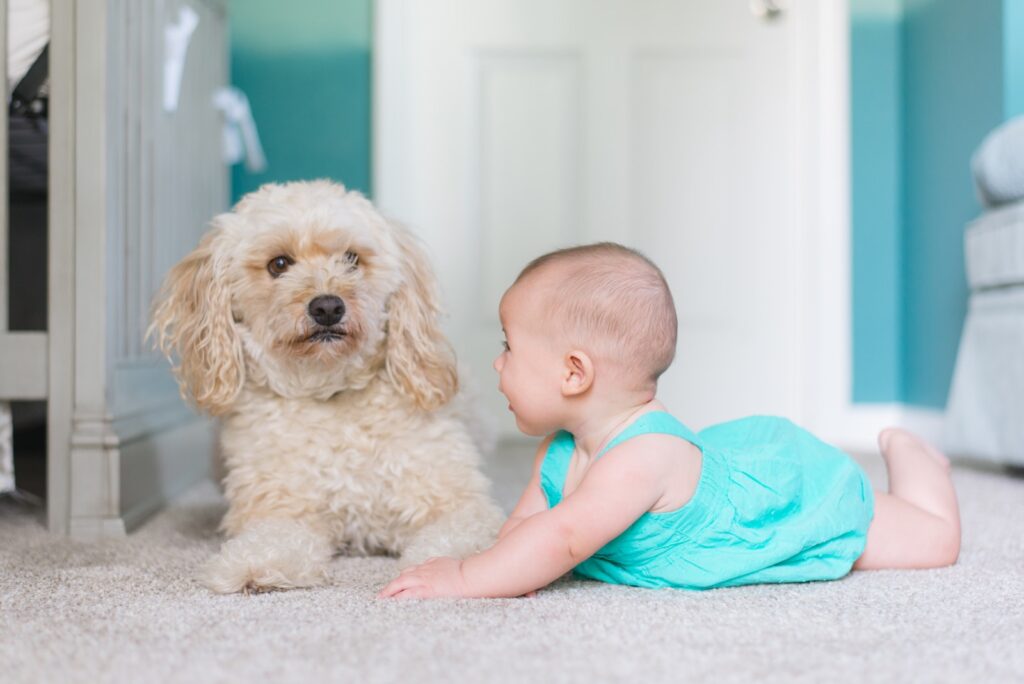
Master Basic Commands
Prioritize basic dog training commands, such as “sit,” “no jumping,” and “leave it.” These commands play a vital role in managing your dog’s behavior around the baby. Early training ensures that your dog understands your expectations.
Role-Play: Simulate situations that will occur after the baby’s arrival. Carry a baby doll, mimic baby sounds, and practice moving baby gear around the house. Reward your dog for remaining calm and composed during these exercises.
Encourage Independence
Teaching your dog to be more independent is a valuable practice, especially if your dog is used to undivided attention. This involves behaviors like going to their dog bed when instructed and occupying themselves with a chew toy. The key is to start this training well before the baby arrives.
Balance Attention: Avoid the common mistake of only paying attention to your dog when the baby is not present. To prevent jealousy, interact with your dog when the baby is around. This helps your dog associate the baby’s presence with positive experiences.
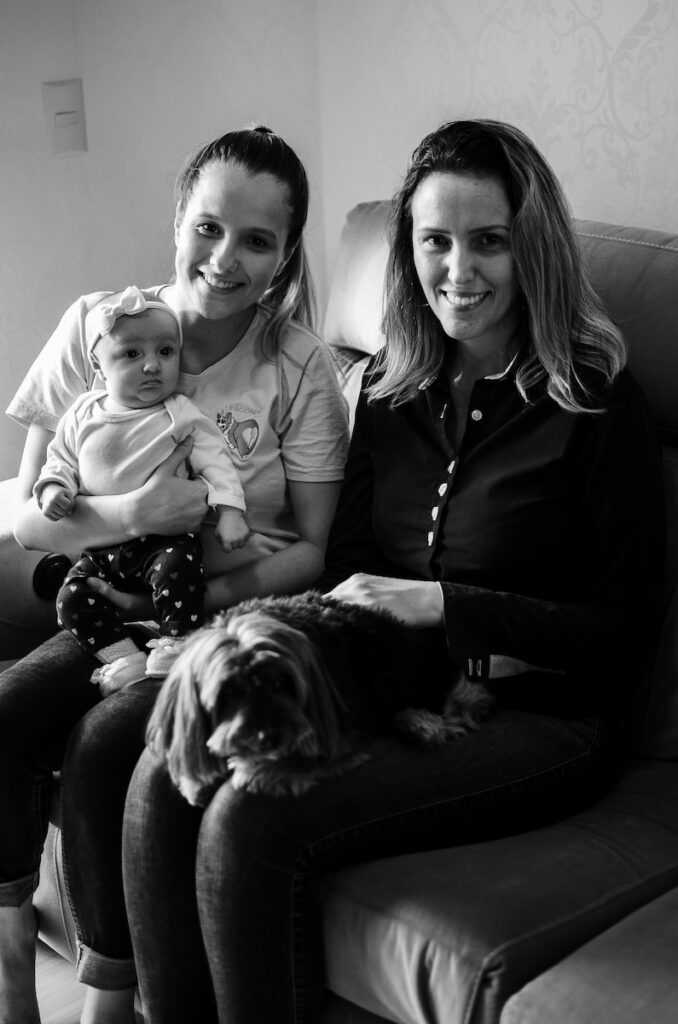
Understand Body Language
Familiarize yourself with your dog’s body language to recognize signs of discomfort or potential aggression. This knowledge is crucial for ensuring safety and a harmonious environment.
Desensitize to Sounds: Introduce your dog to baby sounds by playing audio recordings or videos of babies making noise. Gradually increase the volume while offering high-value dog treats to create positive associations.
Seek Professional Help
Consider hiring a dog walker for exercise and a positive-reinforcement trainer to assist with introductions and building a positive relationship between your dog and the baby.
Dog training for babies is an essential step in ensuring a loving and harmonious home for your entire family. Remember that every dog is unique, so be patient and attentive to your dog’s specific needs. By following these steps and creating a safe and welcoming environment, your dog can become a cherished and reliable companion to your growing family, and the bond between your child and their furry friend can flourish in a nurturing and secure environment.
We’d love to hear how dog training is going with your newborn – leave a comment below!
